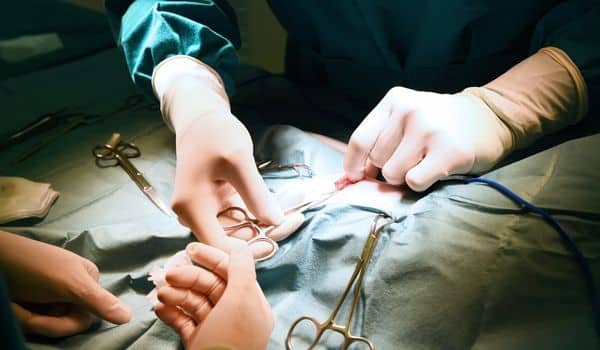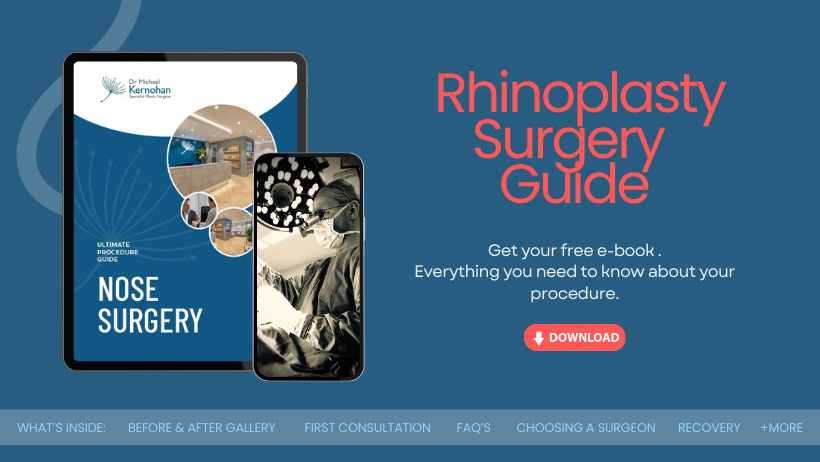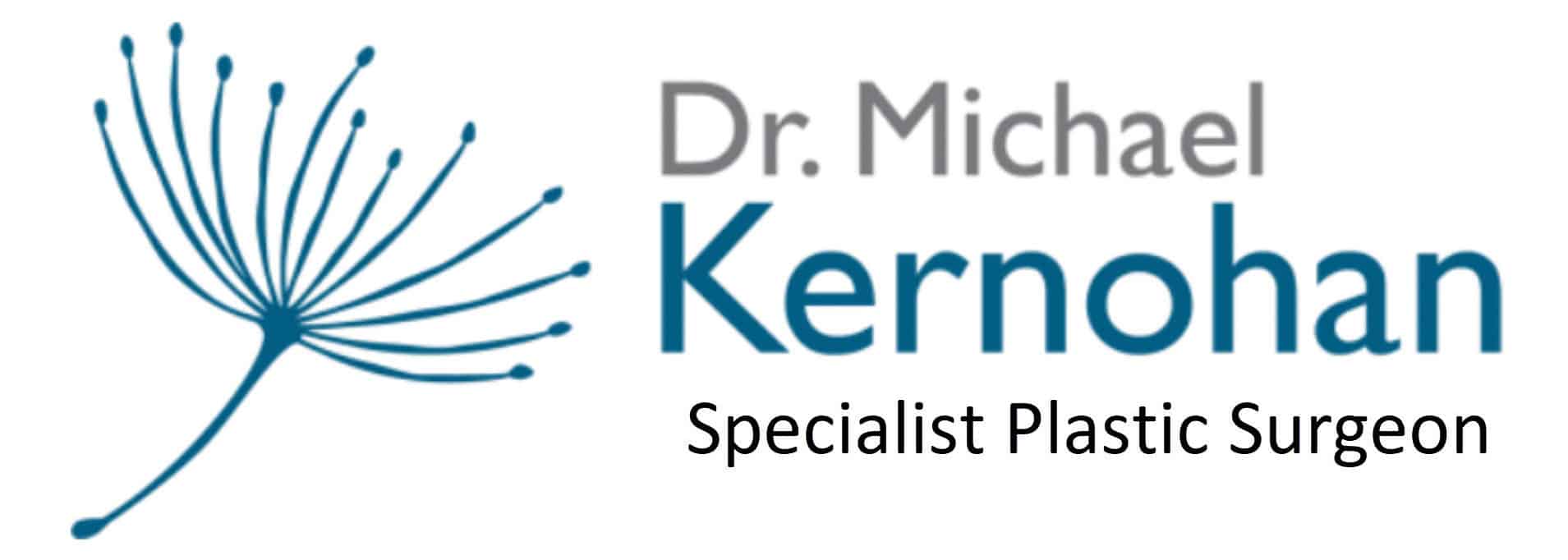Causes and Treatment for Droopy Eyes
Saggy eyelids can blur your vision and make it harder for you to see or read. Some people are born with hooded eyelids, while others develop them as they grow older.
Dr Michael Kernohan is a Sydney specialist plastic surgeon with many years of experience performing surgical and non-surgical cosmetic procedures that lift the eyelids.
Continue reading to learn more about what causes hooded eyes and ways to make your eyes look bigger with and without surgery.
Take the Quiz
What Are Hooded Eyes?
Hooded eyes, also known as ptosis or droopy eyes, have excess skin folds just below the eyebrows that droop down over the upper eyelids. The excess skin can sag down all the way to the eyelashes line.
Hooded eyelids can make the eyes look smaller than they are and give them a tired or sleepy appearance. If the upper eyelids droop too much, they can block your sight and cause vision problems.
You may have only one droopy upper eyelid, but people usually have hooded eyelids in both eyes.
How Do You Know If Your Eyes Are Hooded?
You can tell that you have hooded eyes if the skin below your eyebrow folds down and covers part or all of your upper eyelid.
As a result, when your eyes are open, you won’t see a well-defined, curved eyelid space. Instead, you’ll see only a crease right above your lashes.
What Causes Hooded Eyes?
Drooping of the upper eyelid can be congenital (inherited). Some people develop hooded eyes with age or because of an injury or medical condition affecting the eyes.
Possible causes of hooded eyelids include:
- Congenital: This is a common cause of hooded eyes. Some people are born with sagginess in one or both upper eyelids. That happens because the levator muscle, responsible for holding up the eyelid, doesn’t develop properly. As a result, they grow up with a droopy upper eyelid that can obstruct vision and make the eye look weak or lazy, a condition known as amblyopia or lazy eye
- Ageing: This is the most common cause of hooded eyelids. The skin around your eyelids is one of the thinnest in your entire body. As you grow older, your skin relaxes, loses its elasticity, and begins to sag, including the skin above your eyes. That causes the appearance of excess skin on your upper eyelids. The levator muscle responsible for holding up the upper eyelids in place also thins and becomes less toned with time
- Eye injury: Wearing contact lenses for a long time, an eyelid cyst, or getting hit in the eye can damage the function of your levator muscle and cause your eyelid to droop
- Eye surgery: You can develop eyelid ptosis after eye surgery, such as cataract, glaucoma, or LASIK surgery. However, droopy eyelids after eye surgery are usually temporary and resolve without treatment
- Muscle relaxant injections: Upper eyelid ptosis is the most common complication of muscle relaxing injections between the eyes (frown lines), in the forehead, and around the eyes. That happens when some of the substance accidentally gets into the upper eyelid muscle causing it to relax. The drooping usually improves as the injections wear off. Some studies suggest that a prescribed topical brimonidine gel can help relieve this type of eyelid ptosis
- Underlying medical conditions: Some medical conditions can cause droopy eyelids, including Myasthenia Gravis, diabetes, an eye infection, and an eyelid tumour

When Should You Treat Hooded Eyes?
Hooded eyelids are often a natural sign of ageing and nothing to worry about. With that said, you may want to seek treatment for your hooded eyelids if they’re causing you the following concerns:
- Cosmetic concerns: Hooded eyelids can make the eyes appear small, wrinkled, uneven, and tired.
- Impaired vision: Saggy eyelids can block your pupils and blur your vision. Consult a plastic surgeon if you can’t see clearly because of your hooded eyelids
- Headaches: You might have to squint too much to see better if you have drooping eyelids. Excessive squinting strains the muscles around your eyes and can cause headaches
- Dry eyes: Your upper eyelids contain glands responsible for keeping your eyes wet. Hooded eyelids can’t keep your eyes as moist as they should be, which causes them to become dry and irritated
You should also inform your surgeon if you’ve recently gotten anti-wrinkle injections and notice a heaviness in one or both eyelids. In this case, injections can be the reason behind your drooping upper eyelids.
How to Treat Hooded Eyes?
There are surgical and non-surgical ways to treat hooded eyes depending on the cause and severity of the upper eyelid drooping.
Dr Michael Kernohan regularly performs eye rejuvenation procedures. He will carefully examine your eyes to determine whether an underlying medical condition is causing your eyelid ptosis.
He will then offer you the optimal solution for your hooded eyelids.
How to fix hooded eyes naturally?
Below are several tips to help you improve baggy eyelids and sleepy eyes without surgery:
- Chamomile tea bags: Chamomile contains various essential oils and is a natural anti-inflammatory. It can improve your skin and help reduce puffy and saggy eyelids. Steep chamomile tea bags in hot water, wait for them to cool, then apply them to your eyelids for several minutes
- Chilled cucumber slices: Cucumbers have anti-inflammatory properties and have been long used by women to treat red, tired, and puffy eyes. The cooling effect and anti-inflammatory activity of chilled cucumber slices can help you naturally get rid of puffy and sleepy eyes
- Iced water: The cold temperature of iced water tightens the skin around your eyes, which leaves them looking more refreshed
Non-Surgical Treatments for Hooded Eyes
If you don’t have a lot of sagginess and droopiness in your upper eyelids, some non-surgical treatments for hooded eyelids can give you good results.
Treating hooded eyes without surgery can be done using:
- Ptosis eye crutches: These are special glasses with crutches that will lift your drooping upper eyelids. Eyelid crutches can keep your eyes open to help you read and see better. They offer a temporary solution for people with only slightly hooded eyelids who want to avoid surgery
- Muscle relaxant brow lifts: You’ll receive anti-wrinkle injections in the area surrounding your eyes. The injections relax the muscles in your forehead and often allow your brow to rise. As a result, your eyelids become less heavy and lift back up
- Eyelid fillers: You can receive dermal fillers, such as Hyaluronic acid, into your upper eyelids. These eyelid fillers can expand hollow areas of your eyelids and give them more volume
These non-surgical options can give you fast and excellent results if you have only slightly hooded eyelids. However, they’re not permanent, and you’ll need repeated injections to prevent your eyelids from drooping again.
Click to Download Dr Michael Kernohan Rhinoplasty Guide

How to Fix Hooded Eyes with Surgery?
Although natural and non-surgical treatments for puffy eyelids and weary eyes are available, they won’t help you much if you have significant eyelid ptosis.
Plastic surgery is the only way to permanently and effectively treat hooded eyes.
Dr Kernohan offers surgical eyelid-lifting procedures that can permanently repair your drooping upper eyelids and fix your hooded eyes appearance.
1. Upper Blepharoplasty
That is the optimal and permanent solution for hooded eyes. Upper Blepharoplasty is a cosmetic procedure that removes excess sagging skin and tissue from the upper eyelids.
Your upper eyelid lift will involve the following steps:
- First, Dr Kernohan makes a small incision along the fold of your upper eyelid
- Then, he cuts out any excess skin and fat weighing down on your eyelids
- After that, he tightens the levator muscle that controls your upper eyelid and lifts it into a more aesthetically appealing position
- Finally, he closes the incision using delicate suturing techniques that reduce the appearance of a scar
Upper Blepharoplasty is a straightforward procedure that can give you immediate results.
You’ll be able to see better without straining or squinting.
2. Brow lift
A brow lift, also known as an upper facelift or forehead lift, is a cosmetic procedure that raises the brows and rejuvenates the forehead.
Brow lift surgery can be performed with:
- A single, long incision along the hairline extending from one ear to the other (coronal brow lift)
- Two shorter incisions, one above each temple (limited-incision/temporal brow lift)
- Very small incisions behind the hairline (endoscopic brow lift)
During a forehead lift, Dr Kernohan repositions the skin and soft tissue in the forehead to smooth forehead wrinkles. He also lifts the deep forehead muscles to raise the eyebrows and pull the upper eyelids up.
As a result, your forehead looks smoother, and your eyes look wide and more alert.
A brow lift can be done alone or combined with a blepharoplasty to lift the forehead and eyelids at the same time.
What’s The Best Treatment for Hooded Eyes?
There isn’t a one-size-fits-all solution to hooded eyelids. The treatment will depend on the cause and severity of your upper eyelid ptosis.
If you have only a little sagging in your upper eyelids, non-surgical treatments such as muscle relaxants and dermal fillers can give you quick, natural-looking results. Nonetheless, these results aren’t durable.
You’ll benefit more from plastic surgery if you have significant upper eyelid droopiness. Upper blepharoplasty and brow lift are surgical options that can permanently fix sagging eyelids and sleepy eye appearance.
An upper eyelid lift removes excess skin and fat that fold down over your eyelids. It also lifts the levator muscle that controls your upper eyelid. Although, it can’t raise your eyebrows.
On the other hand, a brow lift tightens the forehead and raises the brows, which lifts the upper eyelids.
Hence, if your eyebrows are naturally high but you have excess skin drooping over your upper eyelids, an upper blepharoplasty may be your best option. Alternatively, if you have truly droopy eyebrows pressing down on your upper eyelids and causing them to sag, then a brow lift may be your better option.
Otherwise, you can get a brow lift and an upper eyelid lift at the same time if you want even more dramatic changes to your eyes and the entire upper portion of your face.
During your consultation, Dr Kernohan will thoroughly assess your eyelids and eyebrows to give you the most effective treatment for your hooded eyelids.
FAQs about Surgical and Non-Surgical Solutions for Hooded Eyes
How to fix droopy eyelids instantly?
- Home remedies, such as chamomile tea bags, cucumber slices, and iced water, can quickly reduce the puffiness in your eyelids. For more noticeable eyelid sagging, non-surgical treatments, such as muscle relaxant and dermal filler injections, can deliver quick and natural-looking results. If you have significant upper eyelid ptosis, you’ll notice an improvement in the shape of your eyes almost immediately after an upper blepharoplasty or brow lift surgery.
Can you get droopy eyelids after cataract surgery?
- Yes. Droopy eyelids are a possible complication of cataract surgery. Usually, this form of upper eyelid ptosis is temporary and goes away without treatment.
Can a brain tumour cause a droopy eyelid?
- In most cases, droopy eyelids result from ageing or a congenital condition. Although, they can also be a sign of a serious underlying medical condition, such as a brain tumour, Myasthenia Gravis, or diabetes.
When should I be worried about a droopy eyelid?
- Eyelid ptosis isn’t usually a health concern. You should consider surgical repair for your droopy eyelid if it interferes with your vision or is unattractive. However, you should contact a healthcare provider if you suddenly get droopy eyelids, especially if it’s only one-sided or you experience other concerning symptoms simultaneously.
Further Reading
- Read Dr Kernohan’s Blog Blepharoplasty vs Forehead Lift
- Read Dr Kernohan’s Blog What are Heavy Eyelids?
- Read Dr Kernohan’s Blog Will Medicare Cover Eyelid Surgery?
Read Dr Kernohan’s Blog Eyelid Ptosis – How Eyelid Surgery Can Help Droopy Eyes - Read Dr Kernohan’s Blog about Eyelid Surgery in Your 30s, 40s, 50s and 60s





